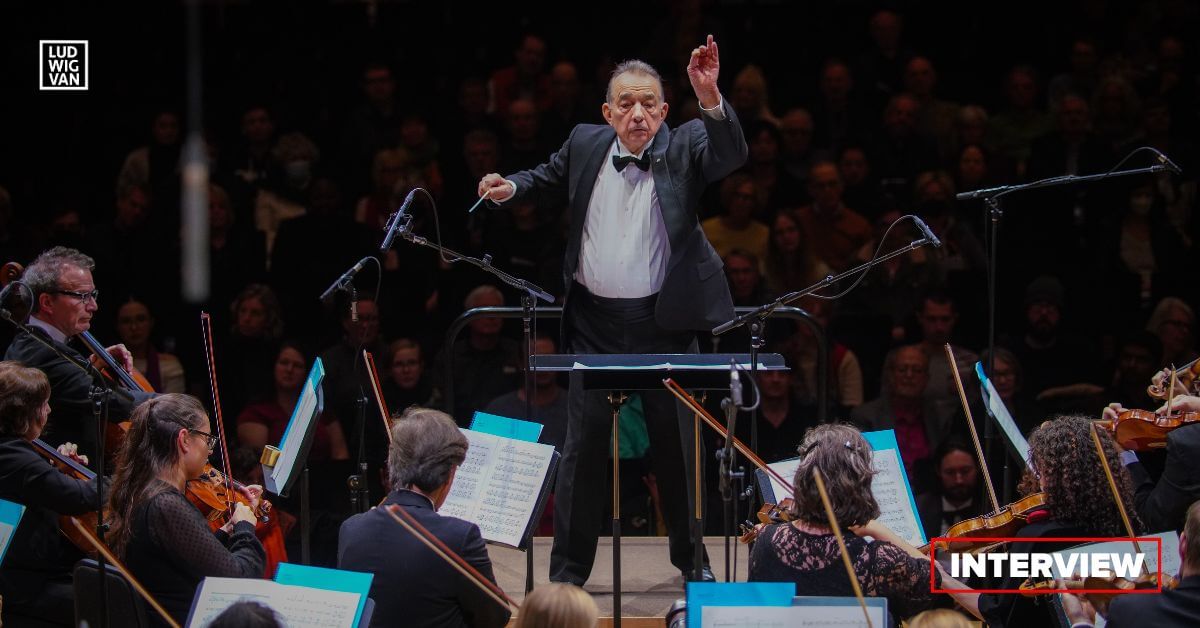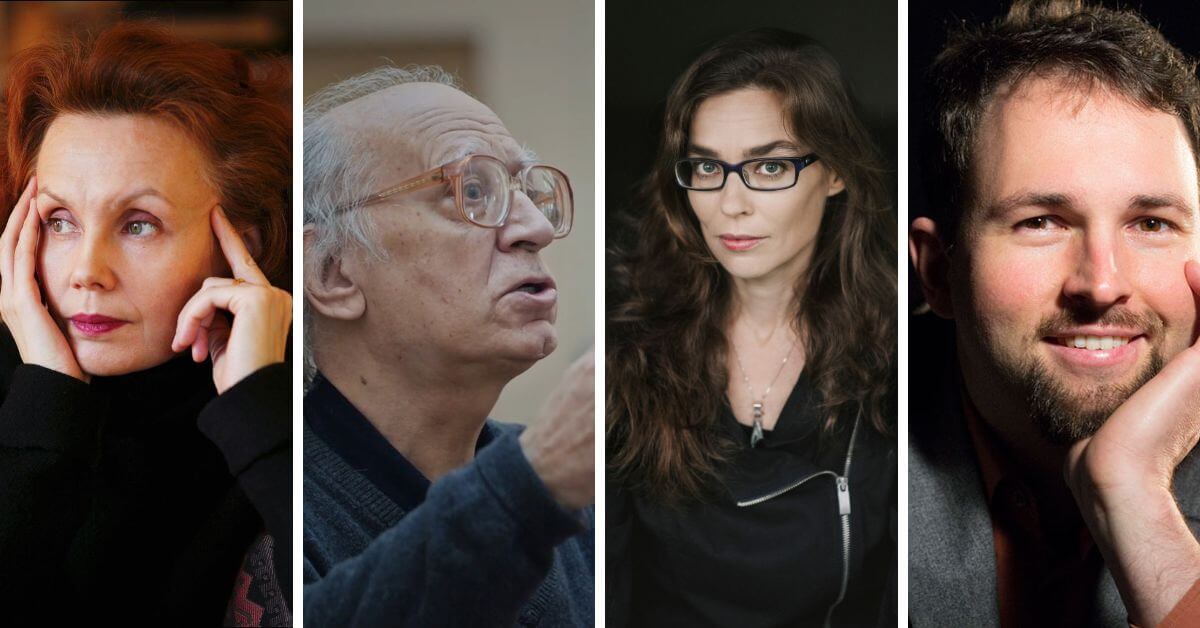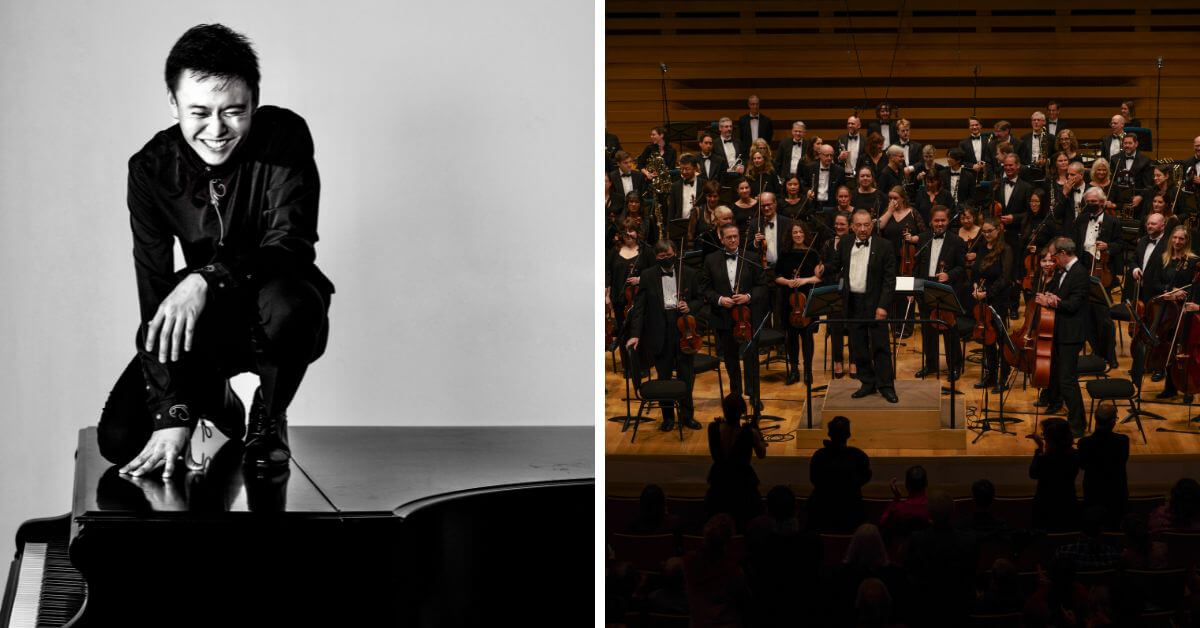
The composers of the pieces in Esprit Orchestra’s next concert, titled Circle Maps, originate from a swath of Eastern Europe that runs from Finland to Slovenia. “They go from north to south in Eastern Europe in a wave,” observes conductor Alex Pauk. “I didn’t necessarily intend that when I set out to programme the concert.”
There’s also something of a sub-theme revolving around the natural world, and the luminous music of the late Kaija Saariaho — the title piece of the concert in its Canadian premiere.
As originally scheduled, the programme was to include Pauk’s own composition for harp, written for Erica Goodman. Her illness, however, has postponed that premiere.
We spoke to Maestro Pauk about the pieces the orchestra will be performing in Koerner Hall on November 30.
The Concert
The programme consists of
- Vito Žuraj (Slovenia): Api-danza macabra * (2021), “Bee Dance of Death”
- Žibuoklė Martinaitytė (Lithuania): Millefleur ** (2018)
- Valentin Silvestrov (Ukraine): Postludium (1984), Symphonic Poem for Piano & Orchestra
- Kaija Saariaho (Finland): Circle Map ** (2012), for orchestra and electronics
*North American Premiere
**Canadian Premiere
The Esprit Orchestra will perform with ARC Ensemble pianist Keven Ahfat.

Alex Pauk: The Interview
“The programming is more about putting together some really interesting pieces,” he says. “I met Žibuoklė (Martinaitytė) in Lithuania.” Pauk had been conducting her pieces already in Canada as well as Lithuania. “I’ve always wanted to connect with her again.” It’s part of Pauk’s ongoing practice of supporting new work through remounting it over time. “It’s something I want to do not only with Canadian composers, but composers abroad,” he explains. Žibuoklė is expected to be on hand for the concert.
Building connections between composers and the musicians of the orchestra over time can also pay off in performances with more depth and understanding. “That’s the way I look at it.”
Naturally, as a proponent of new music, the work of Kaija Saariaho was always on the radar. “I met her in Paris many years ago,” he recalls. The timing was never right during her lifetime, however. “This is the first time that I’ve performed her music. That’s a miss on my part for many years.”
Her Circle Map (2012) is a work for large orchestra and electronics that is intertwined by six quatrains from the verses of 13th century Persian poet Rumi.
The electronic component is based on the six verses recited in the original Persian, processed and mixed in real time during the performance as the orchestra plays. Six speakers surround the audience. Each of the piece’s movements uses one poem, with a specific orchestration, and method of modifying the electronic recording, layering rhythms and melodic elements.
As a point of fact, he’d programmed Circle Map before Saariaho passed away in June 2023; nonetheless, a memorial performance adds poignancy to the choice. “It gives us the occasion to draw attention to the quality of her work. It’s such a beautiful piece, with such clarity. It’s fulfilling a wish that I had and never took up on to play her music earlier.”
The rhythms and music of the Persian language, as recorded, form the basis of the music.
“The wonderful thing about this piece is the sense of transparency and clarity, even when you have the whole orchestra playing.”
Bees, Flowers & Global Connections
“We’re connected to ancient Iran,” he says of Saariaho’s work. “We’re also connected to Ukraine,” he says, referencing the inclusion of Valentin Silvestrov’s Postludium. “In this case, also, identifying with Ukraine.” It’s part of Pauk’s own background, as he points out. It’s important to acknowledge and affirm such works as a statement supporting the notion that Ukraine has its own identity and culture, a concept that war propaganda denies.
“Above and beyond all that, this is a work of such great beauty and powerful orchestral statements followed by beautiful chords and sonorities.” The boldness of Postludium’s opening tapers into a quieter ending on the piano. “It’s an interesting progression. By the end, you’re floating. It’s about the music first and foremost.”
Žuraj’s Bee Dance of Death is, before anything else, an intriguing piece of music. “It’s a really cool piece. The Flight of the Bumblebee appears in it in unusual ways. The orchestra, much of the time, there’s a lot of imitation of buzzing of bees.”
The piece is dedicated to the composer’s father, who was a professional beekeeper, and laments the decline of the species. Still, the mood isn’t entirely sombre. “It’s got this wonderful humourous aspect,” Pauk says. But, the riffs on Rimsky Korsakov aren’t all there is to the piece. “The musical structure is very intelligent, and it’s a real piece of music, but you can have fun with it.”
Žibuoklė Martinaitytė’s Millefeuille is an atmospheric piece. “Literally, a thousand flowers, refers to the background style of many flowers found commonly in European tapestries. It’s a very textural image in those cultures,” he says. The music makes use of multiple tiny sonic gestures in 4ths, 5ths, and octaves — pure intervals, as he explains. “It’s a textural piece, primarily, a sonic garden of a thousand flowers, and if a light wind blew, the texture would be shimmering.”
“The pieces really cover an interesting range of textures,” he says.

The Musicians
A graduate of the Juilliard School, and a Rebanks Fellow at the Royal Conservatory of Music in Toronto, award-winning pianist Kevin Ahfat will perform Silvestrov’s piece
“I’d heard his performances, but never worked with him.” Alex says. Kevin fit the bill when it came to finding someone to tackle the adventurous and demanding Silvestrov piece. “He’s thrilled to be playing the piece,” he says. “He’s got all the technique and expressiveness. This is another thing I like to do is to give people opportunities that are hard to come by — to play a piece like this,” he adds.
The Esprit Orchestra draws on Toronto’s deep talent pool when it comes to classical musicians. Pauk is aware of how lucky he is to be able to tap into it. “I’ll say,” he agrees. “But we’ve worked at it for 41 years,” he adds. “I always try to create environments where everyone can do their best.”
- Tickets and more information for the November 30 concert are available [HERE].
Are you looking to promote an event? Have a news tip? Need to know the best events happening this weekend? Send us a note.
#LUDWIGVAN
Get the daily arts news straight to your inbox.
Sign up for the Ludwig Van Toronto e-Blast! — local classical music and opera news straight to your inbox HERE.
- PREVIEW | SUMMER OPERA LYRIC THEATRE Presents Handel’s Xerxes, Mozart’s Idomeneo & Puccini’a La Boheme July 26 To August 4 - July 26, 2024
- PREVIEW | YENSA Festival V.2 Offers Black Flames Performances & Other Ways To Celebrate Black Women In Dance - July 25, 2024
- PREVIEW | Canadian Talent Conspicuous In The Met: Live In HD 2024-25 Season - July 25, 2024



